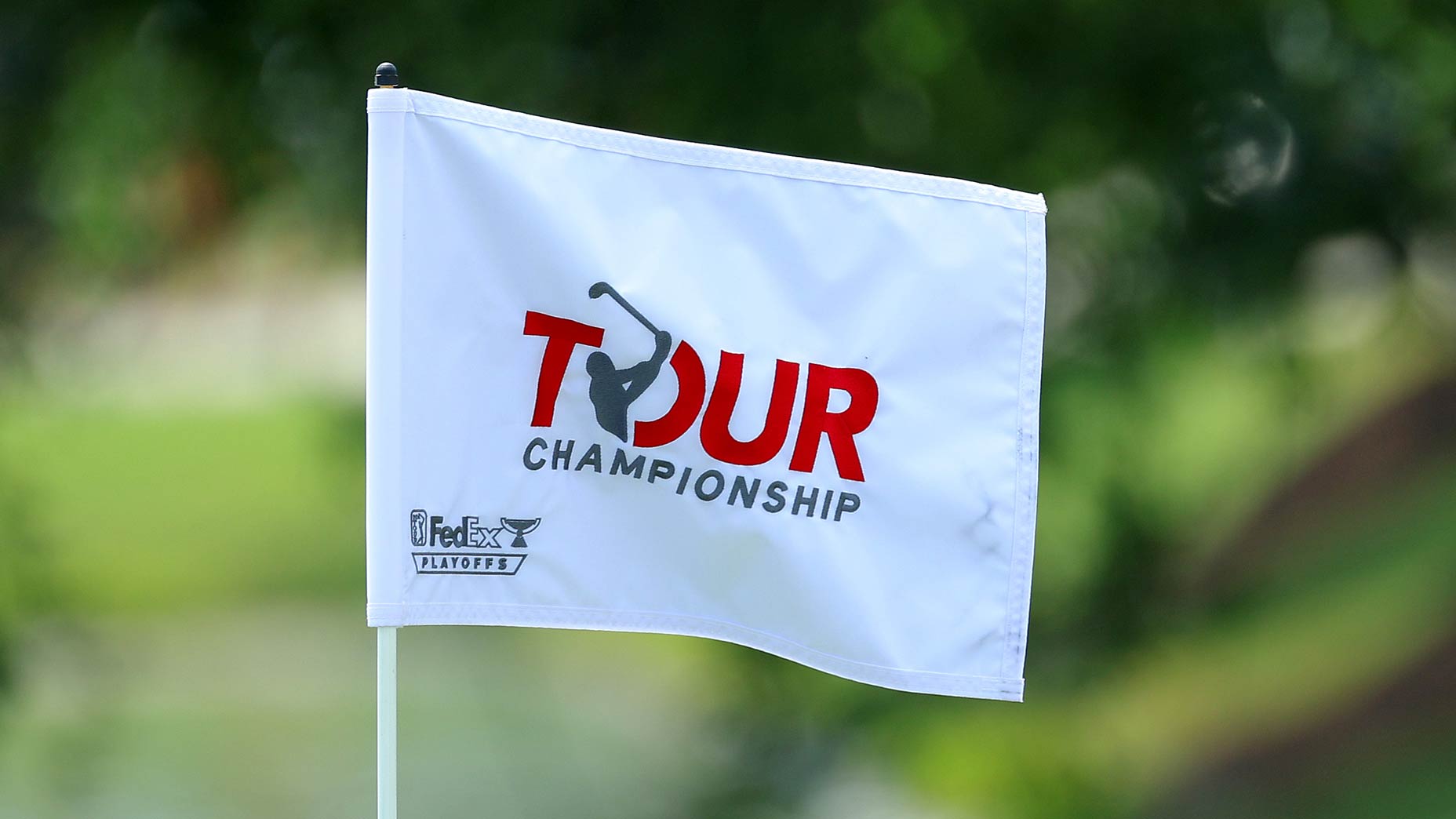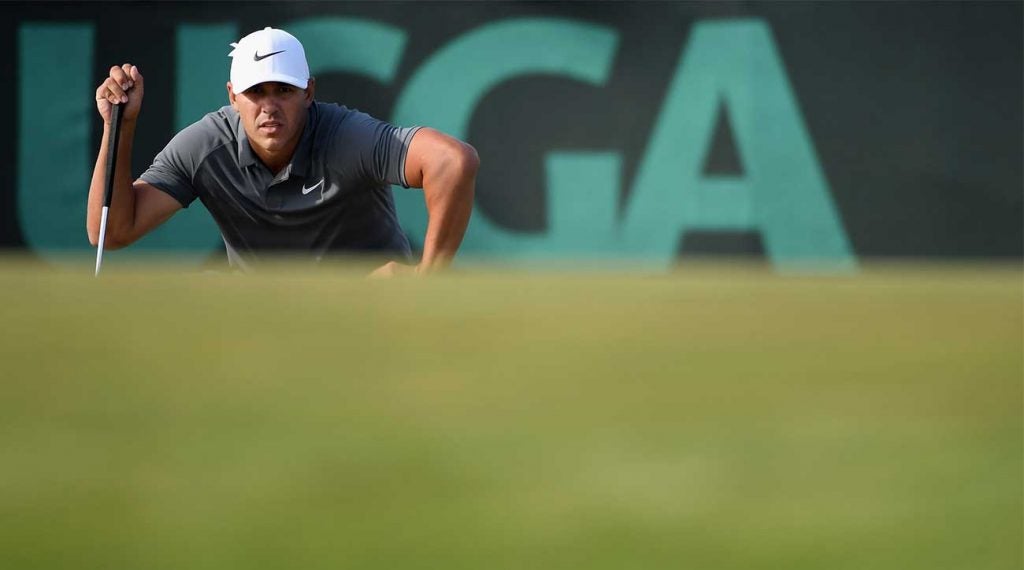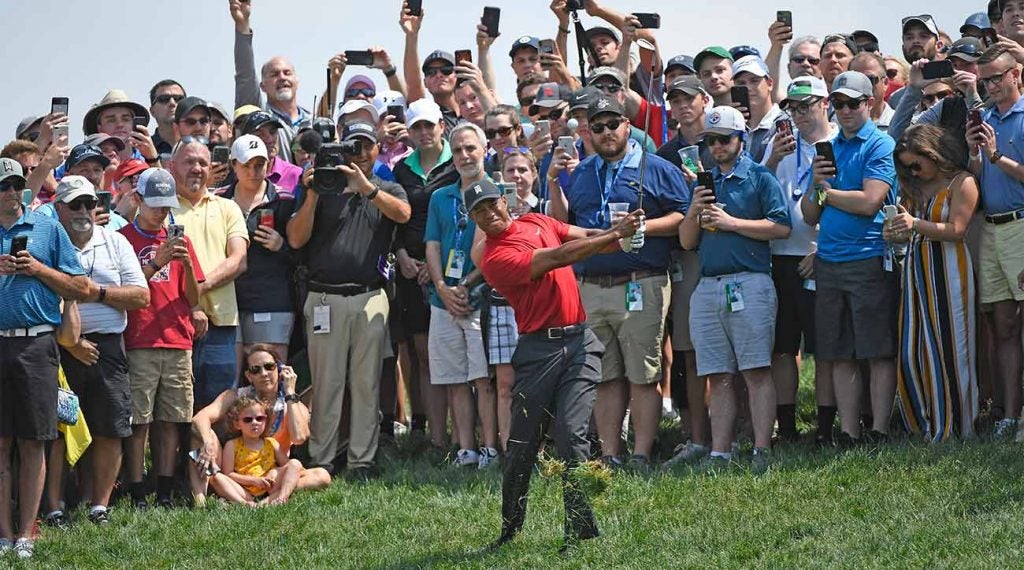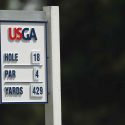 2025 Tour Championship: TV schedule, streaming info, how to watch, tee times
2025 Tour Championship: TV schedule, streaming info, how to watch, tee times
Tour Confidential: Is the U.S. Open broken?
Check in every Sunday night for the unfiltered opinions of our writers and editors as they break down the hottest topics in the sport, and join the conversation by tweeting us @golf_com. This week we discuss the pros’ issues with the USGA and the U.S. Open, Tiger Woods’ start at the Memorial, Hank Haney’s controversial comments and more.
1. Our national championship is under fire. Justin Thomas said last week, “We feel like the U.S. Open…gets out of hand almost every year.” Rory McIlroy added that the Open has “lost its identity” and that the USGA “needs to redeem themselves” at Pebble Beach in two weeks. Phil Mickelson said if it doesn’t rain there’s a “100 percent chance the USGA will mess up,” while Tiger Woods said he prefers the way Opens used to be set up, with long rough and narrow fairways. Players have always griped about Open setups but it’s hard to recall this many superstars simultaneously launching an offensive. Are the players overreacting, or is the U.S. Open broken?
Sean Zak, associate editor (@sean_zak): Considering this is the only event that voluntarily puts itself in jeopardy of angering everyone, I’d say it’s a bit broken. Is the line between a 2-over winning score and 8-under so significant that courses become “lost?” (Shoutout Zach Johnson.) To actually answer the question, I think both things can be true. It’s a bit broken, but can be fixed! And the players have also overreacted. Oakmont’s tough setup was chalked up to a simply difficult course, and that was okay! Shinnecock was, too, until a couple brutal pin locations Saturday. Both things are happening at once.
Michael Bamberger, senior writer: That was an impressive job of getting all the hot-takes on the USGA in one place, and at least they are all on the record. Tiger’s opinion borders on fact: the U.S. Open has changed, and he pinpointed 2006 as the year, with the USGA’s decision to implement graduated rough. Phil’s comments are extreme, but that’s how he rolls, these days more than ever. You can ask some big and upsetting questions here: was Oakmont better with the trees, as it was in the 1960s and ‘70s and 80s, or without, as it was in the ‘20s and ‘30s — and this century? Mike Davis did not need to go on TV and apologize for a bad pin placement last year, and the players did not need to be so wildly negative about one bad pin. It’s all too much. I think the long-term solution here is to have a small rotation of courses that the players, the public and the USGA can get to know. That would go a long, long way toward creating identity. EVERY now and then, you could bring in something new, but one proven with other events beforehand. Five would be plenty: Shinnecock, Oakmont, Pebble would be my starting point. Maybe LACC — let’s see how that goes. Maybe Medinah. Maybe one of the Bandon courses. Pine Valley, if that could be worked out. I don’t think all those run-off areas are working. I’d suggest shorter lengths and, slower greens, which would bring in more players. The USGA has all its the agronomy available to it, and it is abusing the privilege. I’d suggest making fairway bunkers more meaningful as obstacles, as you could see on the fifth hole at Augusta National. Import some Depression-era sand.
Jess Marksbury, multimedia editor (@Jess_Marksbury): Criticizing the USGA seems to be the en vogue thing to do now, and I don’t think it’s a good look for these players. Soooooo whiny! It seems like a few legitimate mistakes have made the USGA into an easy scapegoat. They don’t always deserve it. Look at the last six U.S. Open champs: Koepka (x2), DJ, Spieth, Kaymer, Rose. I don’t see anything wrong with that illustrious group. That said, Pebble should be a slam-dunk success, and if it’s anything but, we maaaaaay have a problem.
Alan Shipnuck, senior writer (@Alan_Shipnuck): Thank you, Jessica. Has the USGA screwed-up a bunch of things? Clearly. That’s been very well-documented. The players endless braying is getting old. Going back decades the USGA has sought to push players to the breaking point. That the blue coats are so deep in the head of so many players tells me the USGA must be doing something right.
Josh Sens, contributor (@JoshSens): Some of the issues people have griped about are outgrowths of the modern power game, which has led to some extreme measures to protect par. I suppose you could circle back to the USGA on that as well and complain about them letting the equipment get out of hand. But there’s been plenty of that kind of griping already, too. As others point out above, enough with the endless carping. Tedious. Fortunately, I doubt they’ll be much to grouse about at Pebble. So tried and trusted. What could possibly go wrong? Right?
Dylan Dethier, associate editor (@Dylan_Dethier): I keep coming back to the answer Eddie Pepperell gave me last month, when I asked him if the USGA has a responsibility to keep players happy with their setup: “I’m not sure they do. I think if a player doesn’t like it, he can choose not to play it. It’s as simple as that, really. They’ve garnered enough respect in history to do kind of what they want to do with it. So I’m not that fussed about how hard it might be…It is what it is and I don’t care if it’s stupidly tough or a little bit easier. It’ll be what it’ll be, and from the viewer’s perspective, it can be fun.”
John Wood, PGA Tour caddie for Matt Kuchar (@Johnwould): I think the guys are FRUSTRATED. Most if not all of these guys (especially if you’re from America) grew up in awe of the U.S. Open. I know I did. Once a year, you knew what you were going to get: tight fairways, thick rough and rock-hard greens that accepted the well-struck shot while also rejecting one that was caught a couple of grooves low. THAT is, or was, The United States Open. That was it’s identity. You knew tough-as-nails players like Curtis Strange, Corey Pavin, Hale Irwin, Tom Watson, and of course Jack would most likely be there at the end, as much for their mental toughness as their ability to hit a 3-iron. I think the players today are frustrated that the USGA has tried to do too much. Trying to be everything to everyone through experimentation with course setup, the courses they choose to go to (Erin Hills and Chambers Bay are not U.S. Open venues, I’m sorry), and they end up having to trick up the courses so those rock-hard greens that don’t accept ANY shot, good or bad. Augusta National has maybe the toughest greens in the world, fast and sloped and usually quite firm. The players never say a word about how Augusta sets up the course. When’s the last time you heard a complaint about a PGA Championship or a British Open? It doesn’t happen. So when the best players in the world en masse say something’s wrong, I tend to believe something’s wrong. Guys are FRUSTRATED that this event that they’ve held in such reverence their whole lives has become much more about the USGA than the players, the great golf courses, and even the champion. In the lead up to the PGA, or the British, or the Masters, do we talk about what might get messed up THIS year? We don’t. This isn’t the players’ fault. If I were to run the next U.S. Open, I’m calling Corey, and Curtis, and Jack, and Tom and saying “Hey, can you help us out here…we don’t have all the answers. What’s a U.S. Open to YOU?”

2. At another Open — the U.S. Women’s Open — Jeongeun Lee6 of South Korea prevailed Sunday with a final-round 70 to edge a trio of chasers, including Lexi Thompson, by two shots. One of the other clear winners of the week was the course, the Seth Raynor-design at the Country Club of Charleston. If social media was any indication, fans delighted in seeing the old-timey layout in action. How much do you suppose an interesting venue — at either a men’s or women’s tournament — influences whether viewers will tune in?
Zak: In my opinion, the venue has only a little to do with people tuning in. Now, much more could have been done to hype up the course. I suppose that’s our job a bit, but Fox’s as well.
Marksbury: I think the venue only moves the meter when the course is generally shrouded in (secrecy or ultra-exclusive, a la Pine Valley or Cypress Point. That said, I was onsite for this week’s Women’s Open and loved seeing that crazy-cool reverse-Redan green (the par-3 11th at the Country Club of Charleston) in person, and it’s nice to know that viewers thought it was interesting too.
Shipnuck: I think as golf course architecture has become more accessible and democratic the average golf fan is taking a greater interest in course design, especially when it comes to places we rarely see. CCC was certainly a big talking point on Twitter feed. The names on the leaderboard still matter most, though.
Bamberger: I think it’s huge, because the players are golf savants and when they like the course, when they think it’s interesting, that filters down to every aspect of the event.
Sens: I just finished reporting a story that deals in part with the architecture buffs of the digital age. There are lots of aspiring Robert Hunters out there. As Alan says, architecture has become more accessible and democratic. But what has changed far more is the channels people have to discuss it. Everyone has a voice. Obviously, that’s not always a positive thing in other arenas. But when it comes to nerding out on architecture, it’s good harmless fun. As for whether all that Twitter chatter bumps the ratings? Maybe. But not nearly as much as an A-list leaderboard.
Dethier: I loved Chambers Bay and liked watching more because I thought it was a compelling golf course. I also really like Fox’s cinematic way of shooting golf tournaments. Both make me more likely to watch, and I think I’m in the minority on all of the above.
Wood: I love old-timey that holds up to the modern game. There is nothing more compelling to me than a course like Riviera or Colonial that has somehow exempted itself from the bomb-and-gouge strategy and still keeps the winning score reasonable. But do I tune in specifically for courses? Not really.
3. A less positive storyline from the Women’s Open was pace of play. Andrea Lee, a 20-year-old amateur who plays college golf at Stanford, was handed a slow-play penalty during the third round of the event, but the reprimand didn’t come without controversy. The entire event was played with a sluggish pace, and many thought it was unfair (peculiar?) that an amateur — who can’t earn any money and therefore won’t lose any cash for enforced penalty strokes — was called out. Are governing bodies fearful to call these penalties against pros, or was Lee simply the only player who warranted a penalty?
Zak: Yes, I think governing bodies are fearful to call those penalties, though the USGA has far fewer opportunities than the PGA Tour does. And considering the question above re: USGA approval with male pros, it’s probably best they don’t hand out a penalty at Pebble or GroupThink Tour will have their way on social media.
Marksbury: They need more penalties out there! My goodness, it was SLOW. I really don’t understand the disconnect. During my lone USGA championship experience, there were numerous checkpoints and I was TERRIFIED to cause my group to be put on the clock. Pace of play was set around 4:15. Why that can’t happen at the pro level boggles my mind. Once you’re on the clock, all it takes is a second personal bad time, and you’re penalized. Pros know how to work the system to avoid that second bad time, and unfortunately, amateurs do not. Maybe the solution really is continual timing on every shot, as opposed to waiting until a group is out of position.
ADVERTISEMENT
Shipnuck: This is a particularly bad look because Lee doesn’t know how to game the system like savvy pros and her inexperienced caddie (her poor dad) was part of the problem. The entire slow play situation is so aggravating. The rules are ignored/flouted and the enforcement is so haphazard it’s embarrassing. I think it’s time to accept that golf is slow, no one in a position of power really cares and we’re just driving ourselves crazy talking about it so much.
Sens: She was the easy target. Slow play is an across-the-board ailment in the game, from your local muni to the highest levels of tournament play. I’d love to see a public course (maybe a public course with nothing to lose; already struggling and in a position to take a risk) take a firm stance and start offering incentives to play in 3:30 hours. Maybe four. It’s very doable, no matter your skill level. If you can play in that time, you get a discount. If you can’t, play somewhere else. Yes. I know it would be tricky to implement. But for a struggling course, why not try it? You could carve out a niche. Lots of golfers would love it. I suspect it would boost business. As for the professional game: A shot clock. Rigidly enforced. On everyone. Getting your shot off on time should be one of the skills required to be an elite player, just as getting a pass off quickly is crucial for a quarterback.
Bamberger: I don’t think she was a target. She failed the clock test. Anybody who does should get what Andrea Lee got. The pace of play is not even close to what it should be in threesomes. The main issue is not the player over the ball, but the player getting to his or her ball while other players are playing. You have to be thinking and advancing all the while. Played that way, three elite golfers could EASILY play in under four hours. But it would take radical measures to make a real change here. When you are 100 yards away from your golf ball when you should be over it, you’re out of position. The utter sluggishness of golf, at every level, is strangling our play and the telecasts, too.
Dethier: I caddied this week at the Memorial and could hear plenty of back-and-forth on the range about slow play, specifically Bryson DeChambeau’s comments that being put on the clock was “a little unfair.” Everyone loves to complain about it, players included. Nobody thinks they’re the problem. Boo Weekley playing in 2:15 Sunday early morning was a breath of fresh air.
Wood: Easy target. Much like Tianlang Guan at the Masters in 2013 when he was assessed a slow-play penalty. Did they deserve the penalties? Probably. Have other professionals done exactly the same things without receiving a penalty? Without a doubt. Here’s the main problem that slow play causes, and it’s not TV running over or players getting frustrated. At the highest levels of golf, it’s a competitive advantage to be a slow player. They get to play at the pace they prefer every single round, knowing the worst that can happen to them is they get put on the clock and maybe receive a fine. They get to be comfortable. A fast player rarely if ever gets to play at the pace that best suits his game. It’s not an option because you can’t go around groups of leave your playing partner behind. Fast players who get out here have to learn how to slow down, and it should be the other way around.
4. After taking several weeks off before his start at the PGA Championship (which led to a missed cut), Tiger Woods shot 67 and finished T-9 at the Memorial on Sunday, his final start before the upcoming U.S Open at Pebble Beach. Did Woods show you his game is Pebble Beach ready?
Zak: Tiger hit 75% of his fairways, and anytime he does that, this version of him is going to play well and contend. Bottom line. At a course like Pebble where you don’t need the distance like players did at Bethpage, I’d expect a top 15 from Tiger.
Marksbury: Great stat, Sean. When Tiger won the Masters, he said it was one of the better driving weeks he’s had. His performance at Memorial coupled with his return to a venue like Pebble should send the hype-meter into the stratosphere.
Shipnuck: Oh, hell yes! Pebble is definitely in play.
Bamberger: The sweet smell of 16 coming off Stillwater Cove! He would have LOVE a back-nine 33 on Sunday at Memorial, just to put the kids on notice, but he looks good.
Sens: Top 10 at the very least. Bank it.
Dethier: Gawd, was he good for the first 12 holes on Sunday — and the first nine holes on Saturday, for that matter. Those irons are nearly unparalleled. I might stubbornly pick him to win at Pebble, just like I did at Augusta (…and Bethpage). Luckily I have a week to decide.
Wood: He’s Pebble ready. I’m guessing he’s hoping for firm and fast and windy. His comments this week about loving the old difficult U.S. Open setups make me think he’s in the mood for a fistfight, where the toughest player comes out on top. So many great storylines coming into Pebble, and of course Tiger is at the top of the list.

5. One day after Hank Haney made derogatory comments about women’s golf on his SiriusXM PGA Tour radio show, the long-time coach of Tiger Woods was suspended. (SiriusXM is reviewing his status going forward.) Haney was largely scrutinized by pros and in the press, and Woods spoke up, too. “He got what he deserved,” Woods said. Were you surprised to see Woods take such a strong, public stance on Haney?
Zak: I was surprised, sure, but mainly unbothered because Tiger is on the right side of history here. Look no further than both of Michael Bamberger’s columns on the issue this week.
Shipnuck: Bamberger killed it. As for Tiger, he’s been waiting to punk Haney ever since The Big Miss and, boy, did Hank tee one up for him.
Bamberger: Thank you both. Tiger had his reasons — i.e., can’t stand the guy — but I think the big picture here is Tiger is becoming more comfortable with himself, in every regard.
Sens: Teed it up is right. Haney put his spikes in his mouth, and got a rightful slap-down. It was good to hear Tiger speak forthrightly. No doubt he took some pay-back pleasure in it as well. But it’s not like it was some kind of profile in courage to say what he said. This was an easy one to call Haney out on.
Marksbury: Totally, Josh! Tiger was on-point. But it’s hard not to be, on that topic. It was still refreshing to hear him give a definitive take, regardless.
Dethier: This was definitely some combination of wanting to dunk on Haney and having a perfect alley-oop pass. But, as we’ve seen Sunday night, even after all of this Haney clearly hasn’t learned a thing. Hopefully others have.
Wood: Bamberger did kill it. And I was really happy to see Tiger come out so strongly on this subject.
6. Phil Mickelson carried two drivers in his bag at the Memorial — one for “cute baby cuts,” the other for “bombs” — then went on to miss the cut by four. Are we likely to see Phil take his two-driver strategy to Pebble?
Zak: I think so, and good for him. Whatever works, right? Phil’s former coach, Rick Smith, confidently told me that Phil doing this shows he’s in the right mentality for Pebble. We’ll see if those fairways get hit.
Shipnuck: It worked for Phil at the 2006 Masters, didn’t it?
Bamberger: Would you really need to drivers on a course where you barely need one? And what is he taking out if he goes with two drivers? If there’s no 3-wood then of course that second driver essentially is one. Anyway, one of the many cool things about the game is you put in the clubs, 14 max, you think will help you shoot the lowers score.
Sens: Sure. Why not? By the way, how do you hit a “cute baby cut”? I only know how to hit the big ugly ones.
Marksbury: I find it very bizarre and I hope he just picks a favorite going forward.
Dethier: My sense is that Mickelson does best when he is going “full-Phil,” and that definitely seems to be the case here. I considered writing a full essay in praise of his decision to rip driver down the treacherous par-4 14th on Thursday at Memorial. If Mickelson continues to ride the ridge between ingenuity and madness, we’re all better off for it.
Wood: Heck, I don’t know. It seems to me Pebble will be much easier with “cute baby cuts” that find the fairway over “bombs” that finish in the rough. BUT, Phil is Phil, and before last week, I believe he had used two drivers twice. He won at Sugarloaf the week before the Masters in 2006 by about 10, and then won the Masters. I don’t think he’s done it since, before last week. If I had to bet I’d bet he’ll go with the “cute baby cut” one and play a traditional set beyond that. Or maybe he’ll surprise us all and go Torrey Pines 2008 and not bring any drivers at all.
ADVERTISEMENT








